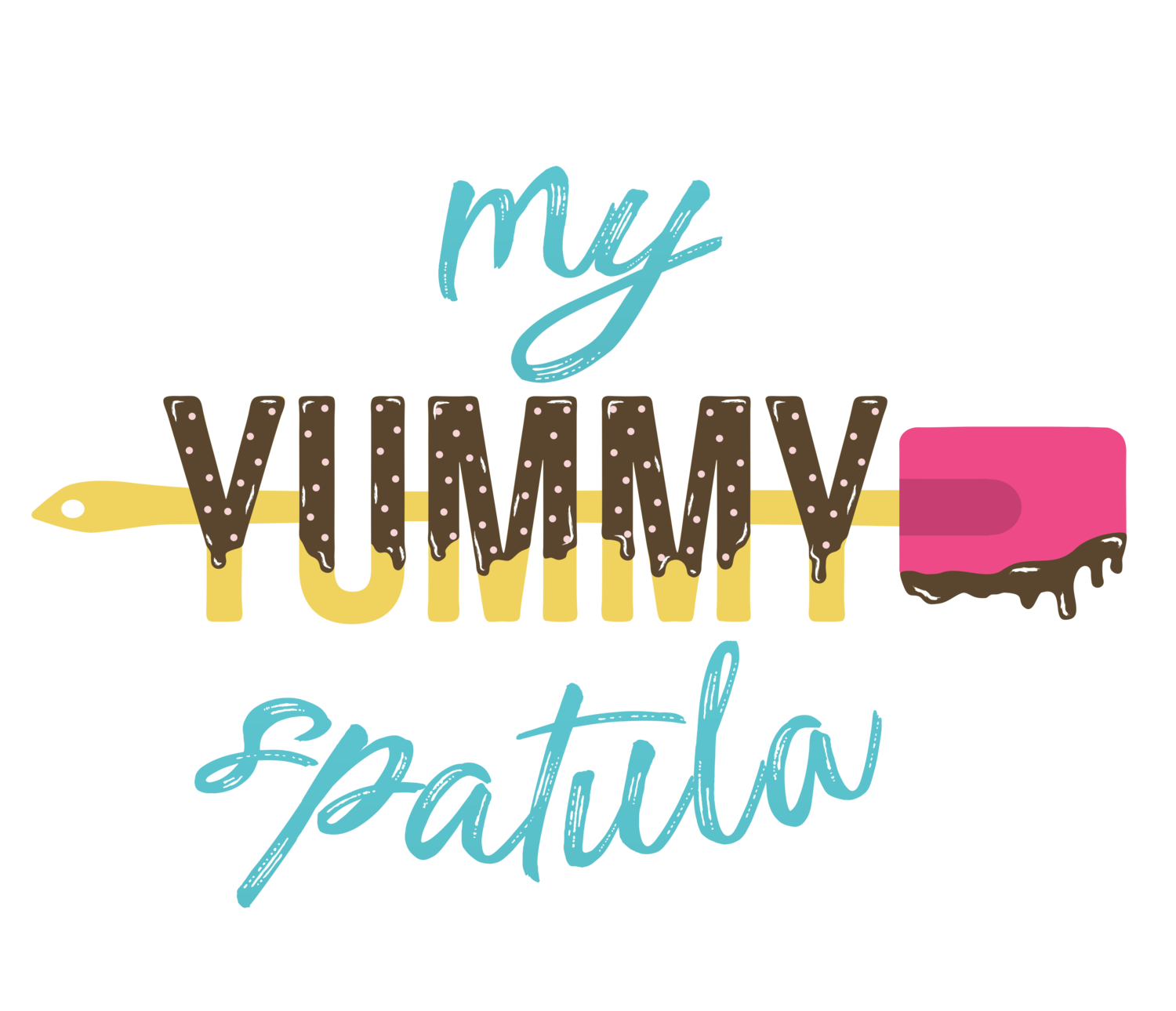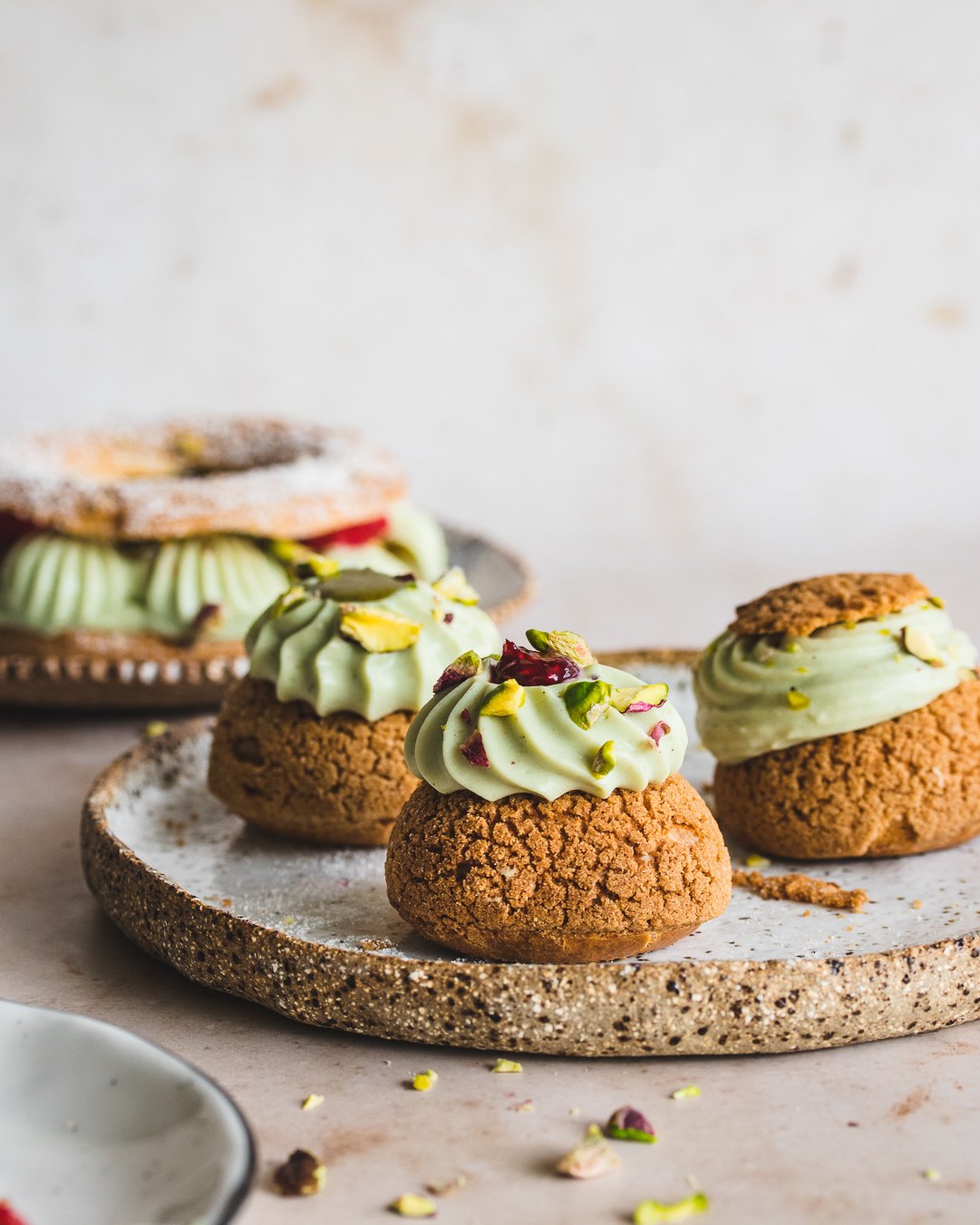Pistachio & fig chocolates
Boy, have I got a banger of a recipe for you today?! You’re in for a wild ride, so you better strap on :D
These pistachio & fig chocolates are gonna make you drool! Crumbly pistachio fig filling layered with a soft pistachio ganache, all enrobed with snappy, tempered chocolate- yumzaaa!
As you may know, Diwali is just round the corner. It is one of the biggest festivals in the Indian culture. And like all Indian festivals, Diwali is almost entirely incomplete without good food and sweets, and lots of it. Since I have zero skills at Indian sweet making, I have given the famous “Pista Barfi” (Pistachio slice), a modern French makeover to present you this Pistachio & fig chocolate :)
There are so many skills involved in this little chocolate square that I possibly cannot teach you all of it in this tiny blog post. I’m only giving you a small glimpse- an introduction of sorts.
If you’re curious and wanna learn more about French Pastry in depth, my signature baking course- Bake It Til You Make It (BTYM) might be the perfect solution for you. Submit an application and book an interview call with me here.
Anyhow, back to these chocolates.
Okay, these are what you call enrobed chocolates. To enrobe something with chocolate means that you dip a filling into tempered chocolate to completely cover it. In this particular case, the pistachio ganache with the fig base makes for the filling, that is first cut into squares and then hand-dipped in tempered chocolate. Makes sense?
You can enrobe anything with chocolate. It could be a caramel filling, or a jelly, or even a marshmallow that is then dipped in chocolate. Enrobing simply means to cover something in chocolate.
Why tempered chocolate?
Enrobed chocolates are a part of chocolate confectionary. These are meant to be long life shelf products that are travel-friendly.
When you enrobe something in tempered chocolate, the right way, the tempered chocolate acts as a protective barrier that lengthens the shelf life of the product. It stops the moisture from getting in, thereby preventing bacterial growth. This is why chocolate bon bons can last for a long time and have a long shelf life.
However, if there’s even a tiny gap or cracks, the moisture can seep in and increase the chances of bacterial growth, substantially reducing the shelf life.
There’s a difference between using tempered chocolate & simply melted chocolate. If chocolate isn’t tempered, it doesn’t have the shine, or the snap. Most importantly, it doesn’t act as a barrier because moisture can easily seep in. This is why it is crucial to temper your chocolate, when making chocolate confectionary.
So, what is tempered chocolate?
This is a whole lesson in itself, one that I teach inside my baking program- Bake It ‘Til You Make It (BTYM), including showing you the different techniques of tempering chocolate, but here’s the gist.
Tempering chocolate, simply means to crystallize the right crystals (beta) in your chocolate. Chocolate is a marvellous genius, and different crystals will yield a different result. Beta crystal is what gives chocolate its shine and snap. Have you ever seen those moulded chocolates that are crazy shiny? It’s not a lustre spray, but good ol’ tempered chocolate. Yup, that shiny. Look at how shiny these little chocolates are!
So now that you understand the importance of tempering chocolate and why to use it, how do you actually temper chocolate?
Honestly, I could give you all the theory but it will never substitute actually practicing it. The idea is to melt the chocolate to roughly 45°C, bring the temperature down to 27°C and then bring it back to 30-31°C. This is in no way an exact blueprint because the temperatures vary ever so slightly depending on the chocolate manufacturer. Plus it’s really not just as simple as following temperatures. There’s a lot of skill involved and lots to keep in mind.
Like I said, there’s so much skilled involved no matter how much I describe it to you, it just won’t be enough. Anyhow, I hope this gives you a very general understanding of the topic. I hope you give this a try and learn loads from it. Happy Diwali!
Recipe
Serves: 8-10
Ingredients
For the base filling:
150g pistachios, lightly roasted
100g dried figs
2 tbsp coconut oil
20g honey
few strands of saffron
For the pistachio ganache:
300g good quality white chocolate
100g pure cream
few strands of saffron
40g pistachio paste
For assembly:
250g good quality dark couverture chocolate
pistachios, chopped, for garnish
cocoa nibs, for garnish, optional
Method:
For the base filling:
Grease a 24cm x 14cm rectangle frame/tin and line with baking paper. Keep aside.
In a food processor, add the ingredients for the base and pulse to fine crumbs. Be careful not to turn into butter.
Place the mixture into the prepared frame/tin and press down to flatten evenly. Use your hands if needed. Chill while you prepare the ganache.
For the pistachio ganache:
Melt the white chocolate over a double boiler or in the microwave in 30 seconds burst until completely melted.
Warm the cream. Add the saffron and infuse for 10 mins.
Rewarm the cream until lukewarm and strain over the melted chocolate in 3 parts, whisking after each addition for a smooth ganache.
Add the pistachio paste and whisk until combined and you have a smooth, well-emulsified ganache.
Pour the pistachio ganache into the rectangle frame, over the base and use a palette knife to spread evenly. Chill overnight.
For assembly:
Next day, use a sharp, hot knife to cut the ganache slab into 3cm squares.
Temper the dark chocolate using either seeding or marbling method.
Dip each square into the tempered chocolate and place onto a clean baking paper.
Fill a paper piping bag with melted chocolate and drizzle over the dipped chocolates.
Use chopped pistachios and cocoa nibs to garnish. Watch a video tutorial for the assembly here.
Notes:
If you don’t know how to temper chocolate, you can use plain melted chocolate. However, the end product will vary and you will have to store them in the fridge at all times.
Moreover, the shelf life of the product will substantially reduce.
Want to become a confident baker?
Apply for my signature baking mentorship program: ‘Bake It ‘Til You Make It’ to learn to bake like a pro and become confident in your skill set TODAY!
Love this space and can’t get enough? Come hang out with me in my private baking community where I offer FREE baking mentorship every week to empower YOU to become the best baker you can be. Plus you get the support and love from your fellow bakers who are just as passionate about baking as you are!
To join: hit the button below and answer all the membership questions. That’s it. You’re in!
If you enjoyed that and tried it at home, please tag me at @myyummyspatula on Instagram so that I can see all your bakes! For more BTS stories, updates and fun, you can follow long here














